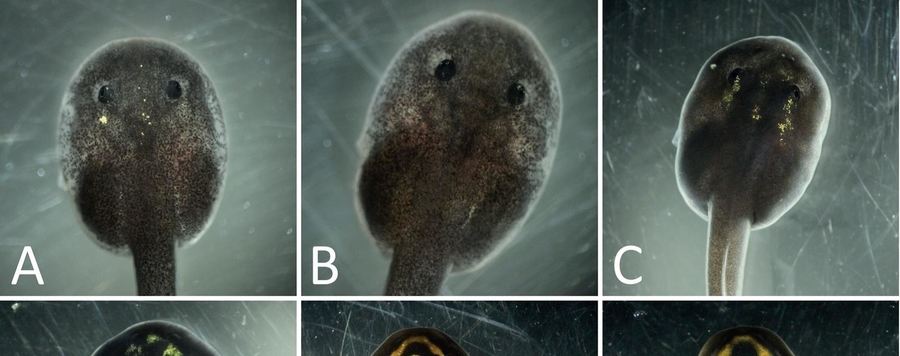
Larval development and morphology of six Neotropical poison-dart frogs of the genus Ranitomeya
Larval development is a crucial step during the ontogeny of amphibians, concomitantly it is the most sensitive life phase in this group. Due to the complex morphological, physiological and anatomical changes, in addition to their susceptibility to the environment changes, this phase is known as one of the most critical period of development as well as an obstacle in ex-situ breeding programs. Tadpole growth rates can be used to predict the effects of biotic interactions, as well as to predict the survival rate on environmental changes. The assessment of the mortality rate during this phase can be performed using a non-invasive image-based tool, programmed on the open source statistical platform R, SAISAQ (semi-automatic quantification of image-based surface area). It allows analyzing semi-automatically a sequence of standardized image files in order to quantify growth rates. However, the current literature lacks estimates of the larval growth rates for the most species of amphibians, which is also true for species of the genus Ranitomeya Bauer, 1986. Herein, we present the data of the complete larval development of Ranitomeya amazonica (Schulte, 1999), R. benedicta Brown, Twomey, Pepper & Sanchez-Rodriguez, 2008, R. imitator (Schulte, 1986), R. reticulata (Boulenger, 1884), R. sirensis (Aichinger, 1991) and R. vanzolinii (Myers, 1982), assisted by photographs, drawings and tables with detailed information about the metamorphosis. In addition, we provide a new larval description for R. benedicta. The results presented here also provide new data of the larval development and morphology for the target species, based on a sample series for each
species. With this information, we want to contribute to a better understanding of the group and provide important data to help solve the systematic relationships puzzle. Providing also a baseline to improve further research on captive breeding, our results may have important implications for conservation breeding programs.






